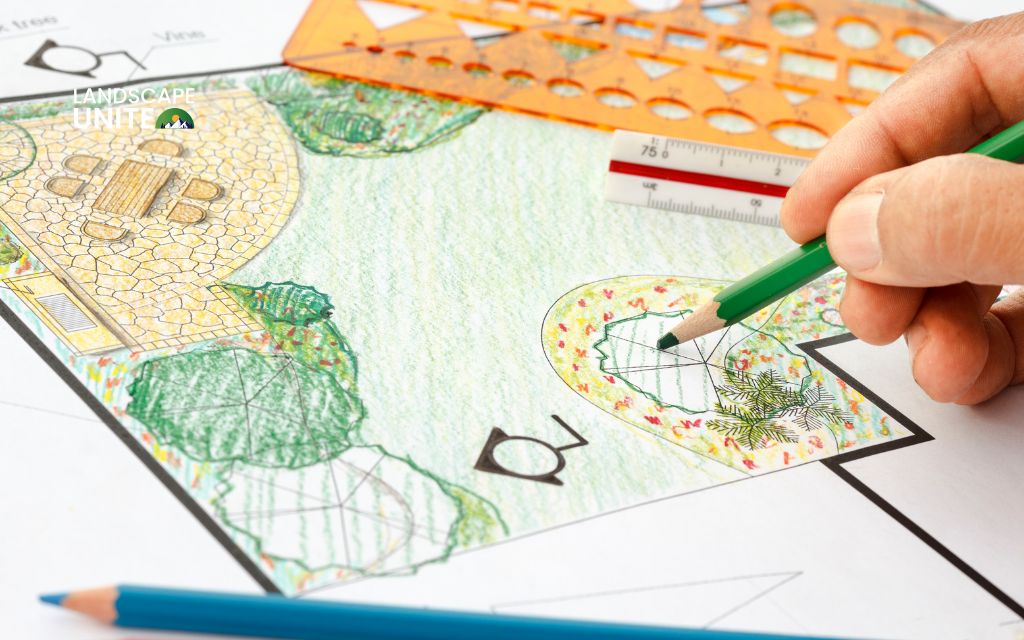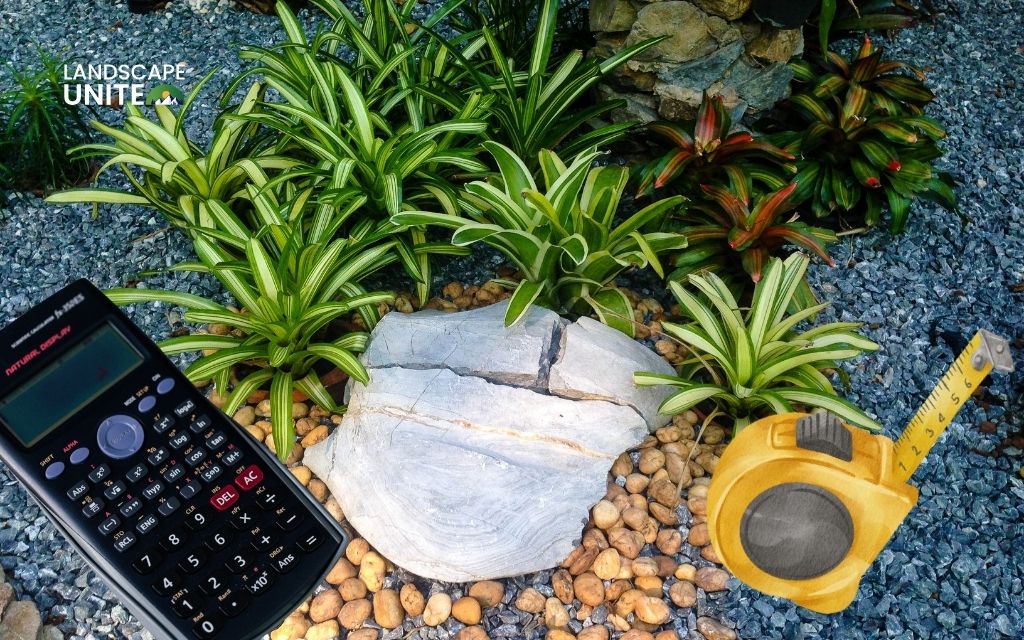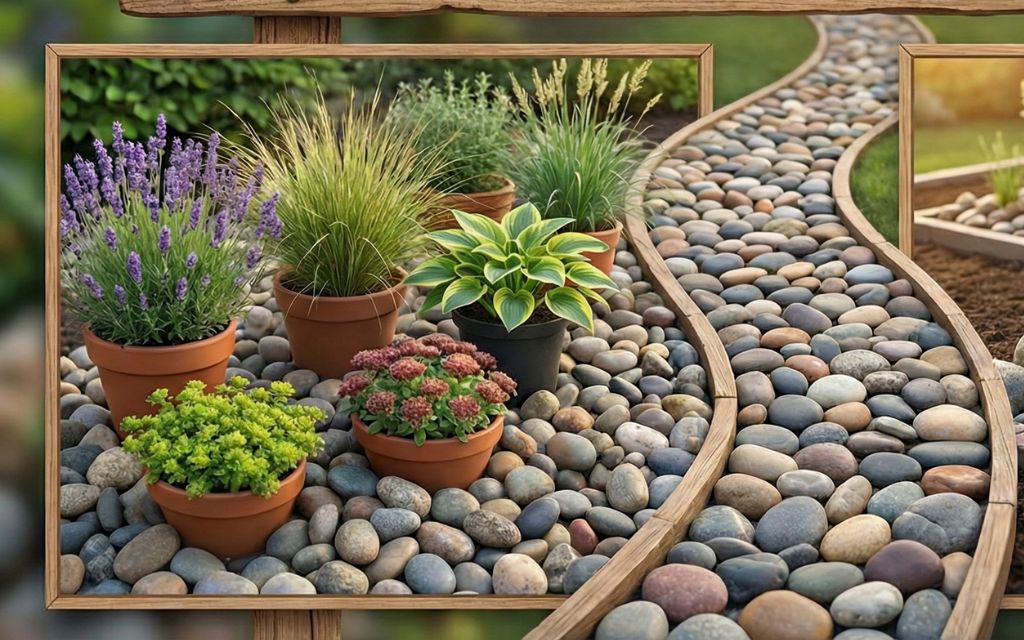Xeriscaping is a landscaping method designed to conserve water using drought-tolerant plants and efficient water systems. This approach is essential for water conservation and creating low-maintenance landscapes that thrive in dry conditions.
Planning your xeriscape prevents costly mistakes, such as improper plant selection and inefficient water use, which can increase maintenance and utility bills. A well-thought-out plan saves money long-term by reducing water usage, maintenance costs, and preventing plant loss. Discover more about creating xeriscape landscape plans in this blog post below.
Step 1: Assess your yard’s needs and climate
Site analysis and initial planning
Start by measuring your yard size and documenting existing structures like fences, trees, and patios. Identify microclimates by noting areas with full sun (6+ hours), partial shade (3-6 hours), and full shade (less than 3 hours). These variations affect plant water needs significantly.
Test your soil’s drainage capacity and pH levels. Most drought-tolerant plants prefer well-draining soil (such as succulents), so clay areas may need amendments or raised beds. Poor drainage causes root rot in xerophytic plants.
Document existing landscape features you want to preserve, such as mature trees that provide shade and established walkways that create design constraints.

Water zone design strategy
Create 3 distinct zones based on water requirements:
- High-water zones near existing irrigation for plants needing regular moisture like vegetable gardens and flowering perennials. Place these where you can easily access water lines.
- Medium-water zones for plants requiring occasional deep watering but tolerating short dry periods, such as ornamental grasses and flowering shrubs.
- Low-water zones for drought-tolerant natives, succulents, and adapted species requiring minimal irrigation once established. These work well on slopes and in naturally dry areas.
Plan drip irrigation or low-flow sprinkler systems to match each zone’s needs, ensuring efficient water delivery without waste.
Step 2: Planning your xeriscape plant selection
Choosing plants for your xeriscape
Focus on native plants adapted to your region, as they’ve evolved to thrive in local conditions while supporting wildlife. These species require less fertilizer, resist local pests, and need minimal water once established.
Include adapted plants (non-natives from similar climates) to expand your design options. Popular choices include Mediterranean herbs like lavender and rosemary, ornamental grasses, and succulents appropriate for your climate zone.
Plan for year-round interest by selecting plants with varying bloom times, foliage colors, and textures. Include spring bulbs, summer perennials, fall seed heads, and evergreen structure for winter appeal.
Spacing and mature plant size
Space plants according to their mature size, not nursery container size.
Research each plant’s expected height and spread to prevent overcrowding, which increases water competition and maintenance needs.
Many xeriscaping failures result from planting based on current size rather than mature dimensions. A small succulent may spread to 3 feet wide, requiring significantly more space than its container suggests.
Sketch your design to scale, marking each plant’s mature footprint to visualize proper spacing and identify areas needing additional plants for desired coverage.
Step 3: Plan efficient watering systems
Drip irrigation vs. sprinklers
Drip irrigation systems excel in xeriscaping by delivering water directly to plant roots, reducing waste by up to 50% compared to sprinklers. They prevent water on foliage (reducing disease risk) and allow precise water delivery to individual plants.
Install smart irrigation controllers that adjust watering based on weather conditions, soil moisture, and seasonal needs. These devices prevent watering during rain and typically pay for themselves within two years through water savings.
Use conventional sprinklers only for lawn areas or groundcover requiring uniform coverage, installing them on separate zones from drip-irrigated plants.
Rainwater harvesting
Install rain barrels or cisterns to collect roof runoff for landscape irrigation. A 1,000-square-foot roof collects about 623 gallons per inch of rainfall, providing substantial irrigation water.
Position storage systems near high-water zones or plants requiring establishment watering. Use gravity-fed systems for lower areas or pumps for elevated locations.
Adjusting watering schedules
Water during early morning (4-8 AM) when temperatures are cool and humidity is high, minimizing evaporation and reducing disease risks from wet foliage overnight.
Adjust schedules seasonally: spring for growth and establishment, summer for heat stress management, fall for dormancy preparation, and winter for evergreen needs during dry periods.
Monitor soil moisture by digging near plant roots rather than following rigid schedules, adjusting frequency based on actual conditions.
Step 4: How to design xeriscape landscape plans
Create a layout
Sketch your yard layout marking existing features, property boundaries, and utilities before adding planting areas and pathways. Use paper sketches or digital landscape design tools.
Organize the layout around hydrozoning principles, grouping plants with similar water needs while creating flowing transitions between zones.
Plan pathways wide enough for maintenance equipment and position high-maintenance plants near water sources.
Plan functional areas
Separate high-water zones (vegetable gardens, seasonal color) near patios and entertainment areas where visual impact matters most. Create low-water zones with gravel paths, succulents, and natives in distant or low-maintenance areas.
Integrate hardscaping elements like dry creek beds, boulder arrangements, and seating areas that provide structure without water requirements. These features add year-round interest and focal points.

Aesthetic considerations
Choose a cohesive color palette based on foliage, flowers, and hardscaping materials that complement your home’s architecture. Repeat colors, textures, and forms throughout the design while maintaining plant diversity.
Use varying plant heights: tall background plants, medium middle layer, and low foreground groundcovers. Mix upright, mounding, and spreading forms for natural-appearing communities.
Select hardscaping materials like natural stone and decomposed granite that reflect heat and require no maintenance while enhancing the drought-tolerant theme.
Step 5: Implementing your xeriscape garden plans
Start small, plan for the long term
Implement in phases, beginning with high-impact areas like front yards or outdoor living spaces. Check out our detailed guide about how to xeriscape your yard easily.
Focus first on irrigation infrastructure and key specimen plants that form your landscape’s backbone.
Plant in fall when possible, allowing root development during cooler months before summer stress. Spring planting works in mild climates but requires more establishment watering.
Where to purchase plants and materials
Source from local nurseries specializing in native and drought-tolerant plants. They stock regionally appropriate species and provide valuable growing advice plus plant guarantees.
Online retailers expand selection beyond local availability, particularly for unusual natives or specialized xerophytic plants.
Research sellers carefully and understand shipping policies.
DIY vs. professional help
Handle plant installation, mulching, and simple irrigation connections yourself. Hire professionals for complex irrigation design, grading, hardscaping, and electrical work.
Professional irrigation installation ensures proper pressure, coverage, and efficiency while providing equipment warranties.
Consider hiring designers for complex sites to prevent costly mistakes.
Why planning a xeriscape yard is essential
Planning prevents common mistakes like inappropriate plant selection, inefficient irrigation, and poor zone organization that increase costs and water usage. Well-planned xeriscapes reduce landscape water use by 50-75% while maintaining beauty.
Without planning, homeowners often install standard sprinkler systems throughout, leading to overwatering drought-tolerant plants. Poor plant selection based on appearance rather than site suitability causes failures and replacement costs.
Budget overruns occur when projects proceed without comprehensive planning, resulting in unexpected site preparation costs, plant replacements, and system modifications.
Explore more about how much it costs to xeriscape a yard in this guide.

Mistakes to avoid when creating xeriscape landscape plans
- Poor plant selection: Avoid choosing plants based solely on appearance without considering climate suitability, mature size, and maintenance needs. Skip marginally hardy plants that struggle during extreme weather.
- Inadequate irrigation design: Match irrigation systems to each zone’s water requirements. Use separate zones for high, medium, and low-water plants with appropriate equipment for each application.
- Forgetting maintenance needs: Plan realistically for pruning, deadheading, and seasonal cleanup. Ensure maintenance access to all areas and position high-care plants accessibly.
Additional tips for successful xeriscaping
- Hardscaping elements: Use rocks, gravel, and sculptures that require no water while providing year-round structure. Choose materials reflecting regional character and complementing your home’s architecture.
- Planning for sustainability: Include native plants supporting wildlife with food sources and nesting sites. Plan for continuous pollinator blooms throughout the growing season.
- Cost considerations: Buy plants during end-of-season sales, choose smaller. specimens that establish quickly, and phase projects over multiple seasons to spread costs.
Conclusion
Follow these 5 essential steps: assess your site and climate, plan plant selection based on water zones, design efficient irrigation systems, create functional layouts, and implement in manageable phases.
Start with thorough site assessment, then develop plant and irrigation plans based on these principles. Create detailed layouts matching your budget and timeline while allowing flexibility for adjustments as your landscape matures.
You can learn more about xeriscaping in our landscaping knowledge section. Our garden knowledge library provides everything you need to create your own beautiful backyard.
Frequently asked questions (FAQs)
What are the best plants for xeriscaping in dry climates?
Focus on native species adapted to your region, plus drought-tolerant options like ornamental grasses, lavender, sage, and climate-appropriate succulents.
Can xeriscaping be done on a budget?
Yes, by starting small, buying end-of-season plants, choosing smaller specimens, and phasing projects over multiple seasons while handling appropriate tasks yourself.
How much water can I really save with xeriscaping?
Well-designed xeriscapes typically reduce landscape water usage by 50-75% compared to conventional landscapes, with actual savings depending on previous landscape type and local conditions.
How do I deal with extreme heat or drought conditions?
Select proven drought-tolerant plants, install efficient irrigation with backup capabilities, use moisture-conserving mulches, and create protective microclimates with shade structures.


